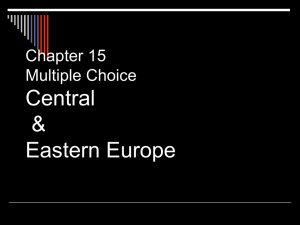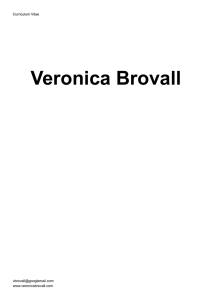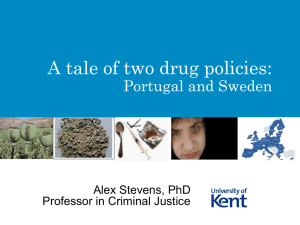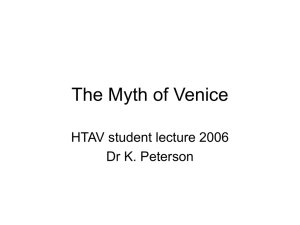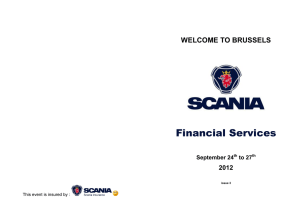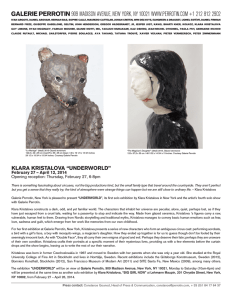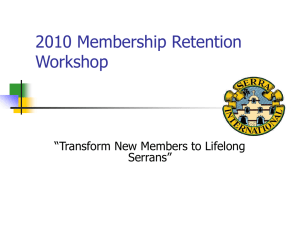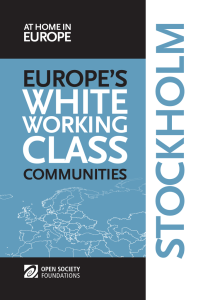Fittja Pavilion Venice
advertisement
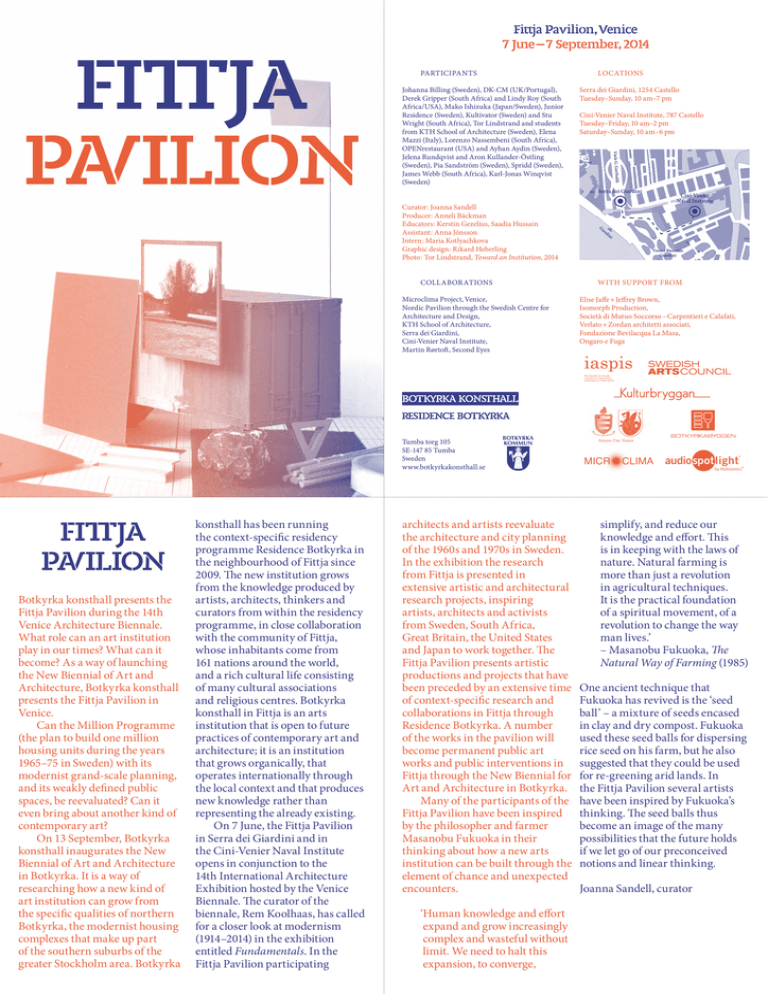
PARTICIPANTS Serra dei Giardini, 1254 Castello Tuesday–Sunday, 10 am–7 pm Cini-Venier Naval Institute, 787 Castello Tuesday–Friday, 10 am–2 pm Saturday–Sunday, 10 am–6 pm i Johanna Billing (Sweden), DK-CM (UK/Portugal), Derek Gripper (South Africa) and Lindy Roy (South Africa/USA), Mako Ishizuka (Japan/Sweden), Junior Residence (Sweden), Kultivator (Sweden) and Stu Wright (South Africa), Tor Lindstrand and students from KTH School of Architecture (Sweden), Elena Mazzi (Italy), Lorenzo Nassembeni (South Africa), OPENrestaurant (USA) and Ayhan Aydin (Sweden), Jelena Rundqvist and Aron Kullander-Östling (Sweden), Pia Sandström (Sweden), Spridd (Sweden), James Webb (South Africa), Karl-Jonas Winqvist (Sweden) LOCATIONS Via le G. Ga ribald FITTJA PAVILION Fittja Pavilion, Venice 7 June — 7 September, 2014 Serra dei Giardini Curator : Joanna Sandell Producer : Anneli Bäckman Educators : Kerstin Gezelius, Saadia Hussain Assistant : Anna Jönsson Intern : Maria Kotlyachkova Graphic design : Rikard Heberling Photo : Tor Lindstrand, Toward an Institution, 2014 COLLABORATIONS Microclima Project, Venice, Nordic Pavilion through the Swedish Centre for Architecture and Design, KTH School of Architecture, Serra dei Giardini, Cini-Venier Naval Institute, Martin Rørtoft , Second Eyes G ia rd in Cini-Venier Naval Institute i Venice Biennale Giardini WITH SUPPORT FROM Elise Jaffe + Jeffrey Brown, Isomorph Production, Società di Mutuo Soccorso – Carpentieri e Calafati, Verlato + Zordan architetti associati, Fondazione Bevilacqua La Masa, Ongaro e Fuga Tumba torg 105 SE-147 85 Tumba Sweden www.botkyrkakonsthall.se FITTJA PAVILION Botkyrka konsthall presents the Fittja Pavilion during the 14th Venice Architecture Biennale. What role can an art institution play in our times? What can it become? As a way of launching the New Biennial of Art and Architecture, Botkyrka konsthall presents the Fittja Pavilion in Venice. Can the Million Programme (the plan to build one million housing units during the years 1965–75 in Sweden) with its modernist grand-scale planning, and its weakly defined public spaces, be reevaluated? Can it even bring about another kind of contemporary art? On 13 September, Botkyrka konsthall inaugurates the New Biennial of Art and Architecture in Botkyrka. It is a way of researching how a new kind of art institution can grow from the specific qualities of northern Botkyrka, the modernist housing complexes that make up part of the southern suburbs of the greater Stockholm area. Botkyrka konsthall has been running the context-specific residency programme Residence Botkyrka in the neighbourhood of Fittja since 2009. The new institution grows from the knowledge produced by artists, architects, thinkers and curators from within the residency programme, in close collaboration with the community of Fittja, whose inhabitants come from 161 nations around the world, and a rich cultural life consisting of many cultural associations and religious centres. Botkyrka konsthall in Fittja is an arts institution that is open to future practices of contemporary art and architecture; it is an institution that grows organically, that operates internationally through the local context and that produces new knowledge rather than representing the already existing. On 7 June, the Fittja Pavilion in Serra dei Giardini and in the Cini-Venier Naval Institute opens in conjunction to the 14th International Architecture Exhibition hosted by the Venice Biennale. The curator of the biennale, Rem Koolhaas, has called for a closer look at modernism (1914–2014) in the exhibition entitled Fundamentals. In the Fittja Pavilion participating architects and artists reevaluate the architecture and city planning of the 1960s and 1970s in Sweden. In the exhibition the research from Fittja is presented in extensive artistic and architectural research projects, inspiring artists, architects and activists from Sweden, South Africa, Great Britain, the United States and Japan to work together. The Fittja Pavilion presents artistic productions and projects that have been preceded by an extensive time of context-specific research and collaborations in Fittja through Residence Botkyrka. A number of the works in the pavilion will become permanent public art works and public interventions in Fittja through the New Biennial for Art and Architecture in Botkyrka. Many of the participants of the Fittja Pavilion have been inspired by the philosopher and farmer Masanobu Fukuoka in their thinking about how a new arts institution can be built through the element of chance and unexpected encounters. ‘Human knowledge and effort expand and grow increasingly complex and wasteful without limit. We need to halt this expansion, to converge, simplify, and reduce our knowledge and effort. This is in keeping with the laws of nature. Natural farming is more than just a revolution in agricultural techniques. It is the practical foundation of a spiritual movement, of a revolution to change the way man lives.’ – Masanobu Fukuoka, The Natural Way of Farming (1985) One ancient technique that Fukuoka has revived is the ‘seed ball’ – a mixture of seeds encased in clay and dry compost. Fukuoka used these seed balls for dispersing rice seed on his farm, but he also suggested that they could be used for re-greening arid lands. In the Fittja Pavilion several artists have been inspired by Fukuoka’s thinking. The seed balls thus become an image of the many possibilities that the future holds if we let go of our preconceived notions and linear thinking. Joanna Sandell, curator Toward an Institution A proposal put together by Economy (Tor Lindstrand) and students from the Design Process Studio at the KTH School of Architecture (Sweden) Installation, Serra dei Giardini ‘Art – Consider art as a way of experiencing a fusion of “pleasure” and “insight”. Reach this by impurity, or multiplicity of levels, rather than by reduction.’ – Öyvind Fahlström, Take Care of the World (1975) A work in progress toward a new art institution in Fittja, Botkyrka. What if the response to the built environment from late modernism instead of being either demolition or transformation, with the ultimate goal of making more of the same, would be a radical re-interpretation? What if we stopped asking ourselves what we need to do to change these areas and instead ask ourselves how we can let them change us? So, if we are about to build a new art institution in Fittja, how can this then be negotiated in response to the actual situation? What if we build an institution that instead of being put on top of is rather understood as being side by side? Through models, images, text and proposals a new kind of institution and response to the surroundings is being described. It is a collection of material with the ambition to open up to conversations on architecture and art institutions as motors of change. Cassette Locale Derek Gripper (South Africa) Lindy Roy (South Africa/USA) 8-channel sound installation, Serra dei Giardini Cassette Locale is a collaboration between musician Derek Gripper and architect Lindy Roy. The globalised neighbourhood of Fittja, Sweden is the starting point of the music installation. Initially built as a utopian whole, Fittja is now transformed into an assemblage of interrelated societies and diverse communities. Cassette Locale is situated in this complex space. The music installation comes out of extensive research of West African kora music, a close reading of the philosophy of Japanese farmer Masanobu Fukuoka and an exploration of the potential of sound technologies to disrupt our perception of space. Cassette Locale is exhibited as an eight-channel sound installation with eight hypersonic speakers arrayed in the Serra dei Giardini. Visitors are invited to walk amongst the hypersonic sound beams where individual instruments are heard by moving along single corridors of sound. Larger ensembles are audible at specific points of overlap between beams and the full work is experienced at the centralised intersection of all eight sound beams. Derek Gripper is a musician and composer based in Cape Town, South Africa. Since 2012 he has worked on arranging and performing music originally composed for the kora – a 21-string African harp-lute – on classical guitar. Lindy Roy is an award-winning architect and founder of Roy Co. in New York. Projects include Vitra USA, Hotel QT and High Line 519, a 12-storey tower. Roy has published widely and her work has been exhibited internationally with examples in the permanent collections of MoMA, SFMoMA and the Art Institute. Roy has taught at Columbia, Princeton and Harvard Universities. Fittja People’s Palace Spridd (Sweden) Installation, Serra dei Giardini The presentation of Fittja People’s Palace in the Fittja Pavilion is a cut-out from an ongoing dialogue project tied to the renovation of rented apartment buildings in Fittja. Today, there is an imminent need for renovation of these areas. The aim of the municipal estate owner AB Botkyrkabyggen is to develop a renovation method that both manages to solve the acute technical problems and still keeps affordable rents for the current tenants, as well as contributing to long-term goals regarding the social and economic development of the area. The architectural office Spridd and AB Botkyrkabyggen co-operated in the competition Nordic Built Challenge – a multidisciplinary competition asking for sustainable, viable and scalable refurbishment concepts for some of the most common building types in the Nordic region. The building in Fittja was the Swedish competition task. The architecture studio Spridd in collaboration with NCC won the competition, and the process of implementing the proposal has now started. A fundamental part of the project is the revaluation of the area’s potential and architectural qualities, as well as the involvement of residents and local stakeholders. In the ongoing dialogue process with the tenants, a disused basement space has been transformed into a showroom and meeting place where the project and future developments are discussed with the residents. The dialogue space is temporarily recreated in Venice – one part of a typical apartment in the building (kitchen and room) appears in Giardini. Inside, the table for talks with the tenants appears, along with stools that have been painted by children as part of the workshops in the showroom. Through the windows, the landscape in Fittja is seen as it appears through an apartment window in the building. Soil Siteplan Kultivator (Sweden) Stu Wright (South Africa) Serra dei Giardini and the Flower Shop Artists’ and farmers’ collective Kultivator has worked with Botkyrka konsthall on a number of residencies, both in Fittja and in Cape Town. Their understanding of the intricate relationship between humans, animals and vegetation in cities and in rural areas has formed the basis of their work, celebrating the soil as the fundamental interface between society and nature. Together with Stu Wright from the grassroots initiative Red Hill Literacy Project, Cape Town, Kultivator will work with the soil of the garden, people’s movement between places and the concept of mental and spatial connection between the suburbs of Fittja (Stockholm) and Red Hill (Cape Town). Initiated in January 2014, this work re-arranges parts of the garden topsoil to draw an outline for a project connecting the communities of two places. The drawing, the map and the track in the garden invite visitors to both a contemplative walking and a direct participation in pressing and laying bricks of soil. One wild pelargonium plant’s cuttings from outside the Shack of Buyiswa Ponti (founder of the Red Hill Literacy Project) will be sold in the flower shop of Serra dei Giardini, for the benefit of the work in the shantytown. Variations on a Caffé OPENrestaurant (USA) Ayhan Aydin (Sweden) Serra dei Giardini and in the Coffee Shop In multiple visits to Botkyrka konsthall’s residence program in Fittja, Residence Botkyrka, OPENrestaurant has presented variations on a café, as a space for neighbours to meet and share stories around food and life in northern Botkyrka. Taking the restaurant and its codes as a sculpture in relief, the collective presents a new form of a café in the Serra dei Giardini coffee shop. Ayhan Aydin, Jen Smith and Amanda Eicher will present a dish designed with Fittja neighbours to offer as a part of the coffee shop menu; they will also lead a daily workshop during the opening weekend of the Biennial in which visitors to the pavilion will participate in the café much like the residents of Fittja, making and experiencing Fittja food and personal food stories. OPENrestaurant is a collective of artists and restaurant workers from San Francisco, who have moved the restaurant space, its architecture and codes, into an art context to explore issues of food and society. Ayhan Aydin is a meal-ecologist and artist based in Fittja. Seeds of Circle Mako Ishizuka (Japan/Sweden) Mako Ishizuka is interweaving her work with the work of several artists in the Fittja Pavilion, resonating the ideas of the farming pioneer and philosopher, Masanobu Fukuoka. With the seeds from Italian local farmers, Kultivator and her own compost, she produces the seed balls that contain the seeds of all the ingredients to produce the dish developed by OPENrestaurant and Ayhan Aydin. The seed balls will be spread around the Serra dei Giardini and Venice with the wish to harvest at the end of the exhibition period to serve for next occasion. The visitors are invited to join to produce the seed balls during the opening days. Mako Ishizuka is an artist based in Stockholm and Paris, working with visual installations as well as social projects and urban interventions, reflecting physical and psychological distances in our everyday life. Fittja Centra DK-CM (UK/Portugal) The development of Stockholm’s 20th century suburbs followed the rule of creating a social, commercial and civic center (called a ‘centrum’) around an existing or new railway station, and then letting residential development grow around it, usually in a highly planned way. Each Centrum was intended to work as a hub for its surrounding community, and many continue to function in this way. The ‘Million Programme’ district of Fittja was planned in exactly this way, but in the decades since it was built multiple centres have sprung up within its pre-fabricated and standardised infrastructure, partly as a result of the multiple ethnicities that call it home: religious rooms, specialist food shops, allotment societies, cultural organizations. Through this informal process of revising the original scheme, Fittja’s social structure has become de-centred, complex, networked. Working with students of KTH Stockholm, DK-CM have been mapping and characterising the multiple ‘centra’ of Fittja to form a portrait of an area created to fit the needs of a mid-century Swedish nuclear family but which has been radically revised over time to account for difference. This mapping will become a public directory in time for the Fittja Biennale. DK-CM is an architecture and research studio founded in 2012 by David Knight and Cristina Monteiro, building on many years of collaborative practice. The studio is currently engaged in master-planning, public realm and civic projects for various sites on the periphery of London, and on Building Rights, a webbased intervention in the UK planning system. has developed an idea of a circular library that rewrites the universe, and where every book in the library is an entrance to another world. For the Fittja Pavilion, Botkyrka konsthall is now initiating an open call for submissions of artist’s books, audio and video works, fragments and ideas around the question of the Labyrinth as an axe wheel for a new artist’s book library, adjustable for the ideas of rethinking and building a new art institution in Fittja, Sweden. To participate, please send your work to: Botkyrka konsthall, att: Labyrint Press, Botkyrka kommun, 147 85 Tumba, Sweden. Digital text works can be sent directly as PDFs to publisher@labyrintpress.com. When submitting a work, please include the following information: a short presentation of yourself (max. 100 characters incl. spacing); a short presentation of the work (max. 500 characters incl. Jelena Rundqvist (Sweden) spacing); webpage; country/place where you are based; Aron Kullander-Östling (Sweden) production year; material information; your contact information. Please send us an e-mail when you have Artist Jelena Rundqvist and graphic designer Aron sent us your work, to publisher@labyrintpress.com. Kullander-Östling create a fanzine live, in dialogue All selected works will be added permanently with exhibition participants and visitors. The project to the archive of Labyrint Press. All artists submitting explores spatiality and architecture in relation to the body and how it affects our lives, moods and behaviour. works will receive a confirmation that Botkyrka konsthall has received their artwork (in case if correct The publication grows organically while it captures ideas, thoughts, symbols, and movements in the process e-mail is provided). A curatorial selection will take place. Labyrint Press will not cover the shipping costs of becoming a fully-fledged fanzine, for everyone to and the insurance of artworks. www.labyrintpress.com pick up. In the performative act of the copying process it invites you to take part in the making, creating an original with your own contributions. Jelena Rundqvist, based in Hjulsta in Stockholm, works in the intersection of fine art, design, and craft. She hosts and builds situations for encounters and uses James Webb (South Africa) collaboration as an artistic strategy. In an exploratory practice rooted in the act of making, she explores Video, 3 min, 2008, Serra dei Giardini issues related to spatiality, aesthetic language, and unconscious knowledge. The fanzine is part of her Le Marché Oriental is two-minute intervention inside ongoing artistic investigation Sumlen, which collects Cape Town’s disused Oriental Plaza, an Apartheid-era knowledge that can contribute to the understanding of shopping mall designed to control ‘coloured’ trade. aesthetics and how they affect us. On the 4th day of Ramadan, 2008, Sheikh Mogamat Aron Kullander-Östling works with visual Moerat of District Six’s Zeenatul Islam Majid mosque communication from his base in the industrial area was invited to sing the Adhan (call to prayer) inside the Västberga in Stockholm. His practice involves both empty remains of the building a few weeks prior to its commissions and self-initiated projects, which often demolition to make way for luxury apartments. deals with intellectual property, stealing, sharing, In the Fittja Pavilion, the work is re-imagined and collaboration, production and material. situated in the Labyrint Press as well as programmed as a screening on the facade of the Greenhouse. James Webb is an artist and experimental musician based in Cape Town. Framed in largescale installations in galleries and museums, or in unannounced interventions in public spaces, his work Karl-Jonas Winqvist (Sweden) often uses ellipsis, displacement and détournement to explore the nature of belief and the dynamics of Musician and producer Karl-Jonas Winqvist will – communication in our contemporary world. through a blog platform especially made for Labyrint Courtesy blank projects, Cape Town, and Galerie Press – present a collection of unique and previously Imane Farès, Paris. unreleased recordings from the 70s by the legendary South African contrabass player Johnny Dyani (1945–1986). The blog platform will be launched at the opening of the Fittja Pavilion and gradually, over the course of the exhibition period, reveal these recordings to the public for the very first time, along with a Elena Mazzi (Italy) presentation of material from Dyani’s other artistry (paintings, correspondence, musical collaborations and Installation, Cini-Venier Naval Institute personal stories). singasongfighter.tumblr.com Reflecting Venice is a project that investigates the possibility of responding to last year’s increase of environmental issues affecting Venice. Through the application of an interdisciplinary methodology, Reflecting Venice explores technological innovation and its implications. Considering local context Johanna Billing (Sweden) in conjunction with new environmental goals is beneficial in redefining their broader effectiveness and functionality. Reflecting Venice began with a HD film, 16 min, 2012, collaboration with Isomorph, a company based in Cini-Venier Naval Institute Udine, Italy, specialised in environmental physics Set to a soundtrack inspired by experimental musician as well as in the development of innovative energy systems; specifically, the project refers to their Franco Battiato, Billing’s video follows a group of prototype of Linear Mirror II. Italian children running around the streets of Rome, Reflecting Venice operates in a specific area of seemingly doing what they like. Their adventures culminate in an empty school, where they start to play Venetian territory: Murano island, known globally for its handmade glass. However, today the island is facing around with troves of outdated educational tools and a gradual transformation; while it remains a precious equipment. Influenced by her time in Rome during historical and cultural heritage site, it conversely protests against university reforms in 2010, Billing’s displays a fetishized representation of international piece mines Rome’s history of progressive pedagogy mass tourism. Mazzi has focused on a characteristic and alludes to psychoanalysis, Pier Paolo Pasolini technique of engraving on mirrors, a typical local and Bruno Munari as well as championing the early craft tradition that is rapidly being replaced by masstradition of Italian filmmakers, who in their often produced simpler glass items. The decorative elements, biographical films about the 40s and 50s, focused on the freedom of children exploring their city as a way to representing flowers and plants, come from the 17th and 18th centuries, have in Mazzi’s work been replaced reflect upon historical and the societal changes. with endangered flowers and plants from Venice Johanna Billing is a conceptual artist based Lagoon. These new drawings, created in collaborations in Stockholm. Her videos weave together music, with Murano’s masters, have been directly applied to movement and rhythm and place subtle emphasis on the energy system Linear Mirror II. the individual within representations of changing societies. The participants in Johanna’s videos all play themselves but take part in staged situations that oscillate between documentary and fiction, as a multilayered interpretation of a place, as well as an exploration of the public and private. Sumlen Le Marché Oriental Music for Xaba Reflecting Venice I’m Gonna Live Anyhow Until I Die Junior Residence: Dream Team Labyrint Press: Open Call Pia Sandström (Sweden) Ruhat Abdulla, Rumeysa Alici, Gustav Andersson, Tova Edin, Sara Rassolie (Sweden) Junior Residence is an unconventional summer job where five youths from Botkyrka are exploring their neighbourhood through artistic processes. The Serra dei Giardini work takes Fittja as its point of departure, where Labyrint Press is a series of exhibitions, an archive and the group is researching and mapping areas that could be changed or improved. The ‘Dream Team’ a publishing house for artist’s books. Labyrint Press will present a programme in the Fittja Pavilion on was founded in 2007 as a result of a collaboration 2–3 July. Follow their journey through the blog: between curator Joanna Sandell, Botkyrka konsthall and artist Pia Sandström. Inspired by the short story by juniorresidencebotkyrka.tumblr.com. Art educators: Kerstin Gezelius and Saadia Hussain (Sweden). Jorge Luis Borges The Library of Babel, Labyrint Press
